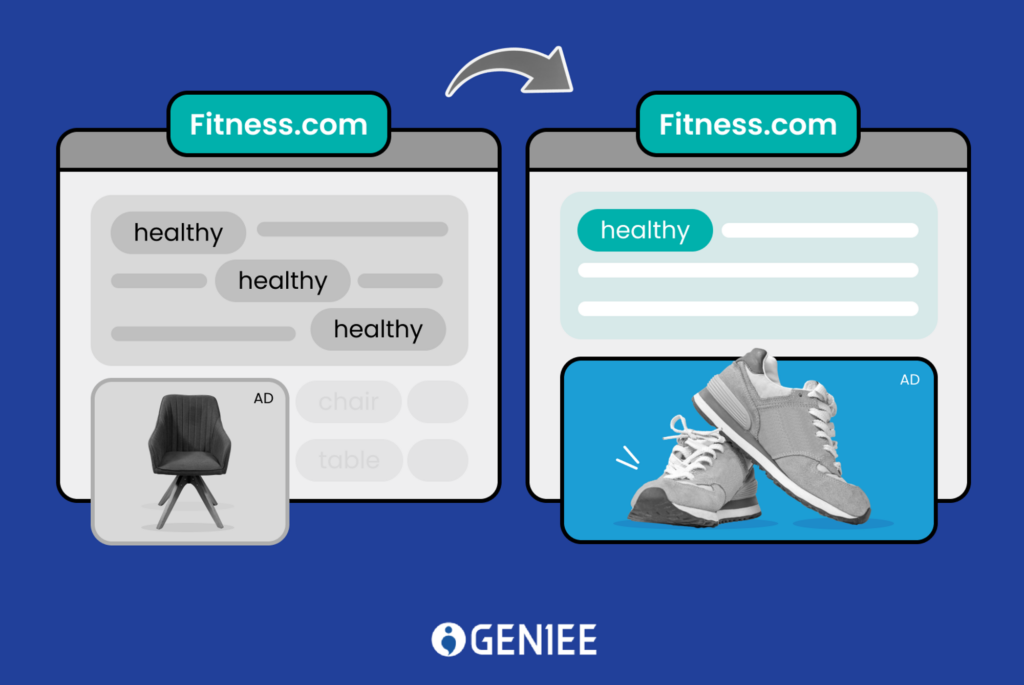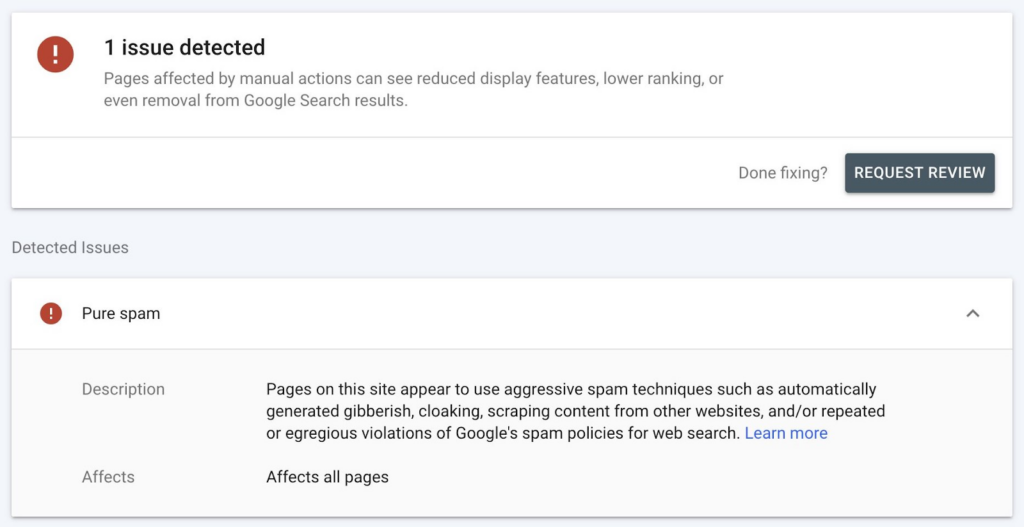
Users utilize the Google Search function to find out the answers to their queries. However, there are numerous websites exploiting this feature to deliver low-quality and even spam content. Consequently, Google has long employed distinct systems and policies to address this issue. Nonetheless, the tactics employed by low-quality websites attempting to circumvent the rules prompted Google to roll out an official Spam Update for 2024. This update aims not only to shield users from junk content but also to guide them towards websites offering valuable, high-quality content.
Announcement Regarding the Spam Update
Google has announced that the spam update rolled out this year will be more intricate and specific than the previous upgrades. Particularly, they are focusing on changes within crucial systems. This update is expected to roll out over approximately one month to ensure that the entire Google Search system undergoes comprehensive modifications without encountering any technical disruptions that would disturb the user experience.
According to Google’s assessment, there was plenty of low-quality content, lacking creativity, plagiarized, or even harmful on their search engine. Therefore, the primary purpose of this spam update is to minimize this type of content up to 40%. They aim to redirect more traffic to websites evaluated as high-quality and useful for user queries.
Spam content is no longer lumped together but rather Google has expanded its classification into specific categories. Low-quality content, generated on a large scale, will find it difficult to evade Google in this thorough inspection. Even websites that appear to provide answers to user queries through the search bar but actually do not, will face intense scrutiny from Google.
Google is committed to improving the quality of search results, rigorously addressing spam tactics used by people to elevate websites to top positions so that Google can deliver useful results that satisfy user queries through this significant update.
To avoid being penalized by Google in this major spam update, web owners should carefully review Google’s policies to ensure they are not engaging in spam behaviors. Because if you unintentionally or deliberately violate these policies, the penalties imposed by Google can be severe, including lowering rankings or even having your website permanently disappear from search results pages.
The Notable Information in the Google Spam Update 2024
This Google spam update impacts all regions worldwide and applies to all languages. Here are the noteworthy sections web owners should pay attention to.
Keyword stuffing
Keyword stuffing is a technique that a website attempts to manipulate search engine results by excessively using keywords. They often add numerous primary keywords or keyword phrases into the content forcibly, without natural context within sentences or articles. Google is aggressively penalizing this technique with a decline in rankings, as it is considered a form of spammy manipulation.
Below are common violations associated with this manipulative technique:
1. Repeating keywords unnaturally.
2. Listing keywords at the bottom of the page.
3. Using white text on a white background to hide keywords from users but still making them visible to search engines.
4. Creating nonsensical sentences with keywords.
5. Placing keyword variations unnaturally (often abbreviations).
In general, the primary focus of keyword stuffing is to insert as many keywords as possible rather than prioritizing providing valuable content to the readers. This approach not only generates meaningless and confusing sentences but also disrupts the natural flow of content. Instead of addressing the audience’s search needs, keyword spamming prioritizes Google search algorithms, ultimately leading to a decrease in people’s trust over time.
Website Reputation Misuse
To increase website traffic, many publishers have uploaded their website link to a third-party web (often in the form of link placement) without active participation or content monitoring by the site owners. This technique leverages the authority of reputable websites, which already attract significant traffic, to boost the rankings of their own pages. After producing content on their main website, they will link it to highly reputable webs on Google Search, such as Wikipedia or major forums like Reddit. They capitalize on the existing traffic of these websites to enhance their side’s position in search results.
In essence, while not inherently wrong, there is a common phenomenon known as Parasite that this spam update addresses severely. Google has issued warnings about taking action against this tactic since November 2023, with some steps taken from December onwards, but it’s still insufficient. Websites falling into the parasitic category will be ranked lower in search results by Google, and may even be removed from search engines.
A common example of a “parasitic” website is one that tries to link their site to an article on Wikipedia, believing it will boost their visibility strategy. However, instead of adding links sensibly to provide useful information to readers, they attach unrelated links and spam too many times. This constitutes a violation resulting in negative consequences for their website.
Therefore, this strategy needs to be executed meticulously to avoid impacting your website’s overall score with Google negatively.
Cloaking dodge
Google will penalize publishers using cloaking tactics to manipulate search engine rankings and deceive users. In general, this involves displaying different content to users than what is returned by the search engine.
Your website will be considered cloaking if you violate errors like the following example. For instance, the content on the website causes the search engine to display available running races in the area, while users see a page about discounted yoga mat. This occurs when the content inserts multiple keywords or text to deceive the search engine in order to improve ranking display.
In the case that your website employs a paywall or limits some content for readers, rest assured that Google does not regard this as a cloaking trick as long as you adhere to user sampling principles. Paywalls are a common technique used by websites offering high-quality content such as research papers, and academic materials, requiring users to pay a certain fee or register an account to access hidden content.
This approach is not considered a cloaking dodge because Google understands that publishers have the right to generate revenue from the content they provide, especially high-quality content that requires significant time and effort to create. However, publishers should be mindful that they need to balance user experience and monetization efforts by ensuring that the use of paywalls doesn’t hinder the visibility of the website on search engines.
Key Steps to Address Rankings Drop Post-spam Update
Refrain from Actions Until Google Spam Update Completes
Publishers should refrain from immediate website adjustments as this may lead to unforeseen impacts on search engine rankings. Hasty edits may result in technical issues, negatively impacting user experience or even search engine scores. Instead, await update completion to understand their impact on your website before carefully analyzing which factors to alter.
Review Links
Carefully assess each link on the website to ensure relevance and quality. Avoid linking to unrelated or low-quality pages, as they can impact the credibility and position of your website on search engines. Do not forget to pay attention to removing spammy or unnatural links to maintain the natural and professional nature of your website.
Optimizing Technical Elements
Ensure that your website complies with the latest principles set by Google to maintain visibility. This includes fine-tuning meta tags, optimizing URL structures, and addressing other technical aspects to enhance the overall search experience for your audience. By updating these technical elements, you can effectively attract more traffic without spending extensively on display ads.
Contacting Google
In case you encounter any difficulties following this spam update, don’t hesitate to reach out directly to Google via email to request their review and resolution of your issue. Additionally, Google offers numerous official resources and free support tools to publishers for reference. By contacting Google and leveraging available resources, you can address issues promptly and ensure compliance with their guidelines for optimizing your website visibility.
Build Social Engagement
In addition to updating content on your website, enhance activity across social media platforms, particularly those popular among your audience, to maintain connections with them. This fosters audience engagement through consistent content sharing. By focusing on creating compelling posts and actively engaging with the users, you can nurture brand loyalty and drive organic traffic to your website. Moreover, social media channels serve as communication channels for gathering valuable feedback and understanding audience preferences, allowing you to tailor content accordingly.
Conclusion
In brief, to survive the Google Spam Update of 2024, website owners need a multifaceted strategy that prioritizes quality content, ethical practices, and especially proactive engagement with Google’s guidelines. By focusing on content that centers around users and diligently monitoring website elements, websites can weather the challenges posed by updates. Additionally, fostering initiative connections with audiences across various platforms can help websites emerge resilient in the ever-evolving digital landscape. It’s also crucial to remain adaptable, stay informed about the trends, and continually refine strategies to sustain long-term success amidst the dynamic changes brought forth by Google’s updates.
Frequently Asked Question
1. How does Google differentiate between valuable and low-quality content for readers?
Google has updated an official PDF to guide publishers in assessing the search quality of their websites. The inclusion of illustrative examples can help better understand what constitutes unreliable content, enabling web owners to make more informed decisions about their content and ensure compliance with Google’s standards for page quality.
2. How do I know my website has been targeted by Google?
The website data will reveal everything. If metrics like impressions, traffic, significantly decline, you might have been scrutinized by Google. An easy way to check is to visit Google and search “site:yourwebsite.com” to see if you appear.

3. Is AI-created content being targeted on this Google spam update version?
The 2024 spam update is an evidence of Google’s relentless effort to ensure users experience original, useful, and high-quality content. Therefore, while AI-created content may not be the primary focus, if it doesn’t meet Google standards, the content, and even the websites hosting it, are likely to be adversely affected by the update.




0 Comments